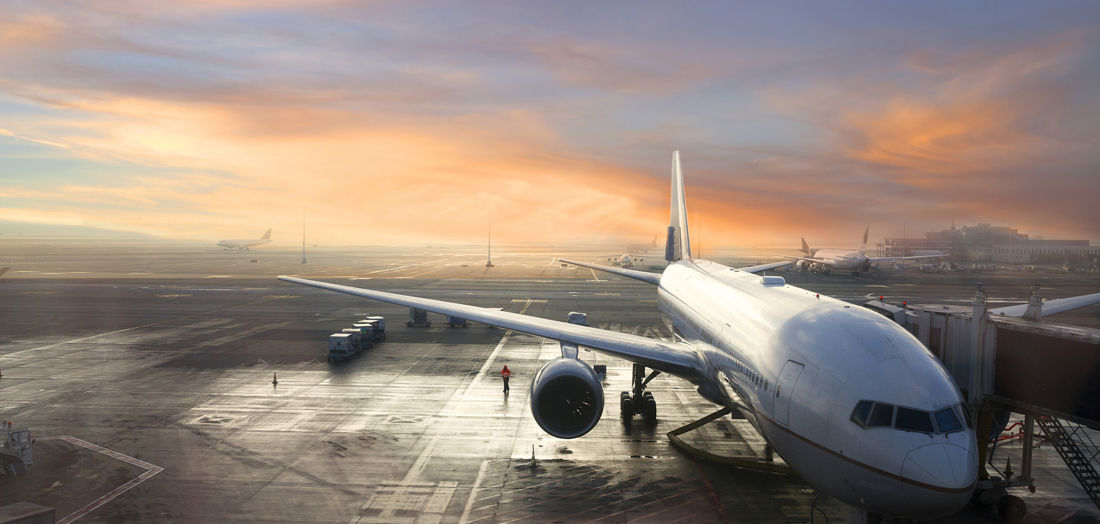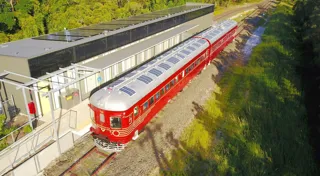Navigating the pathway to cleaner greener Australian airports

24 February 2020
Australian airports could substantially reduce their carbon footprint, according to a new report from the CEFC that identifies 15 initiatives to cut greenhouse gas emissions. More than half of the initiatives – all of which use proven technologies – can address the Scope 1 emissions directly related to the airport operations.
Clean energy and infrastructure: The pathway to airport sustainability is the latest report from the CEFC to bring together technical and financial insights to support the owners and operators of major assets accelerate their transition to lower emissions.
CEFC CEO Ian Learmonth said: “The smooth operation of Australia’s major infrastructure assets is vital to our nation’s economic wellbeing, as well as our ability to achieve significant reductions in our greenhouse gas emissions.
“As a specialist investor in clean energy opportunities, we have a particular focus on working with infrastructure asset investors, owners and operators to help them deliver a more sustainable low emissions operating profile for these long-lived assets.
“Airports are complex infrastructure assets, with the implementation of new emissions-reducing initiatives typically requiring endorsement from multiple stakeholders. A lack of information or awareness of clean energy opportunities can be a major barrier to the required investment. This new report helps bridge this gap, providing practical information for asset owners, operators and investors.”
Of the 15 best practice initiatives discussed in the report:
- There is a common theme of energy efficiency. Initiatives such as energy efficient baggage handling systems could reduce carbon emissions by up to 75 per cent compared with business as usual (BAU). Energy efficient airport lighting upgrades and the use of ground source heat pumps could cut emissions by as much as 50 per cent compared with BAU.
- The electrification of ground support equipment and the introduction of onsite solar and battery storage could each deliver as much as a 100 per cent reduction in emissions compared with BAU, through fuel switching and the use of renewable energy. These initiatives typically have a payback period of less than 10 years.
- Innovative energy-from-waste technologies could enable airports to mitigate biosecurity waste handling and disposal by generating renewable, baseload gas, heat or electricity, for use onsite or export to the grid.
- The total capital expenditure for the majority of the initiatives is less than 0.5 per cent of the total airport asset value.
The pathway to airport sustainability report was prepared by leading global infrastructure analyst AECOM. It provides an overview of current best practice initiatives, for both major and regional airports, and includes global case studies to highlight practical initiatives that airports and industry can adopt to lower emissions.
The report points to the considerable climate-related risks facing airports, from sea level rise to extreme weather events and changing investor and passenger preferences.
It notes that airport-controlled activities produce some 15–20 million tonnes of carbon emissions annually. While many airports are showing a reduction in CO2-e emissions per passenger, the task will become more challenging with global air travel activity predicted to double to 8.2 billion passengers by 2037.
The report discusses the global movement toward climate neutrality within the aviation industry, including a commitment from the Airport Council International – Europe to achieve net zero carbon emissions by 2050. Several airports in countries outside of Europe are also working toward significant carbon emissions reduction goals, including more than 270 members of the Airport Carbon Accreditation program.
While directly applicable to airports, the initiatives also present an opportunity to guide and influence emissions from airlines, passengers and commercial airport users.
Media release, 2020




